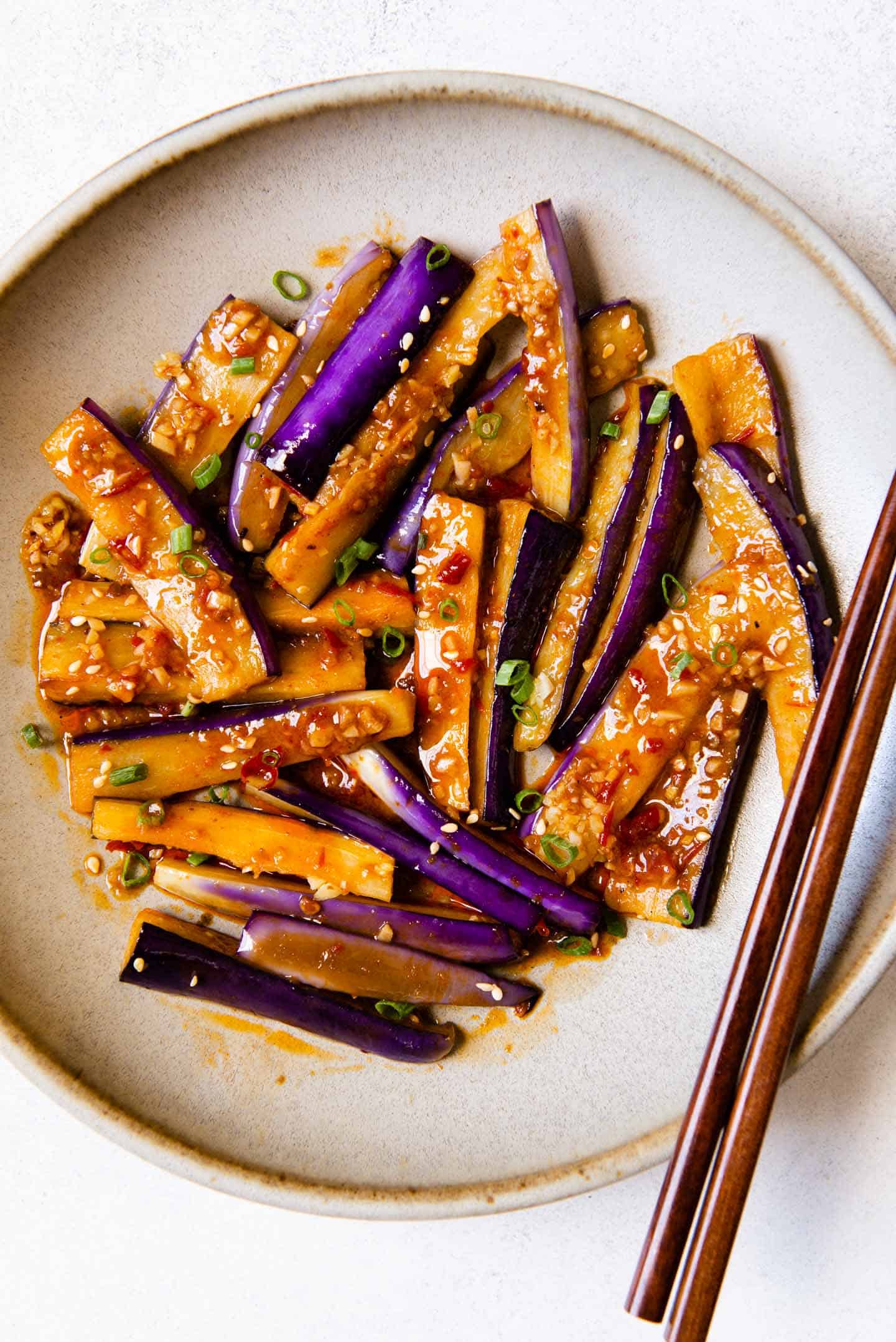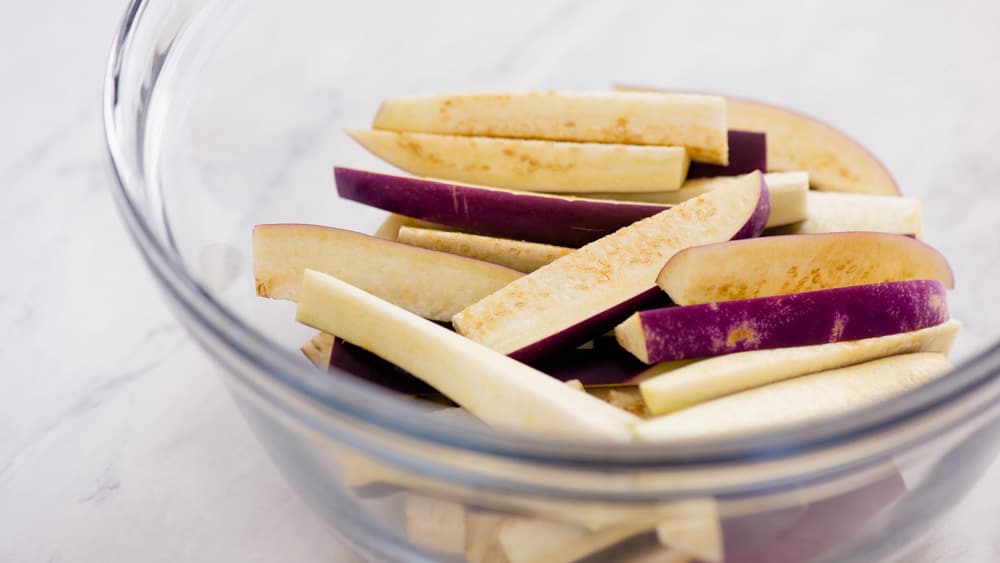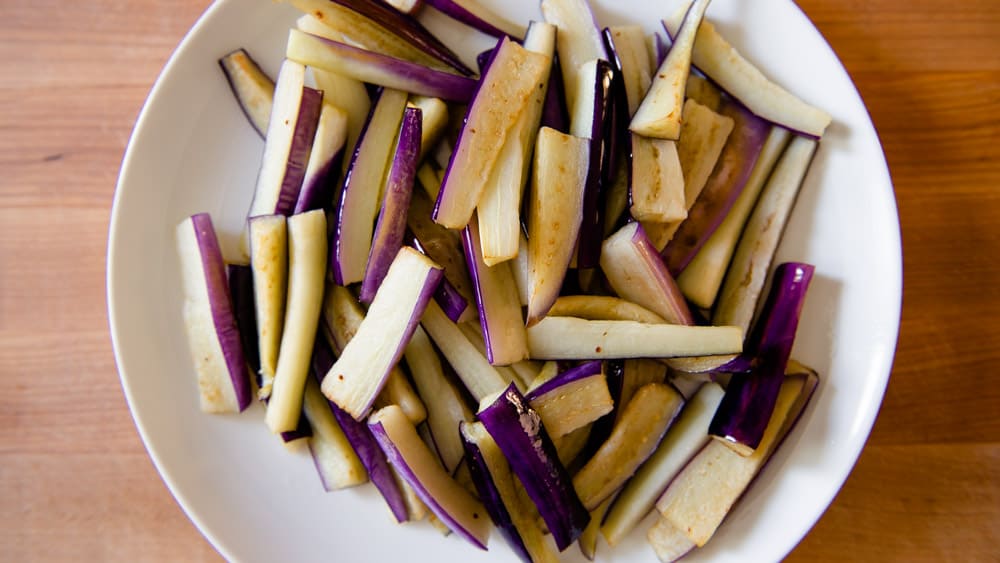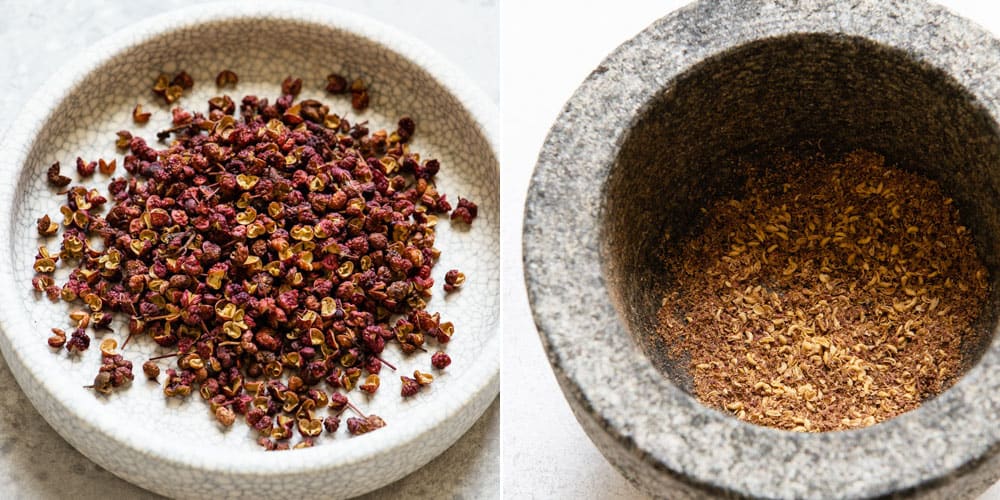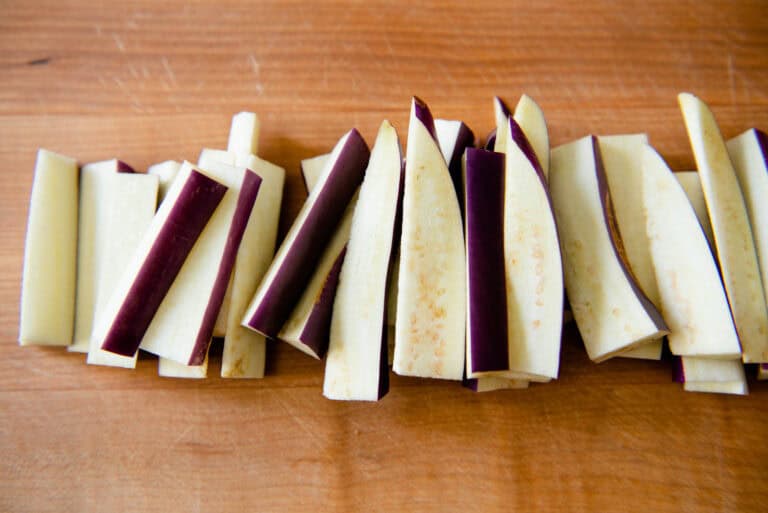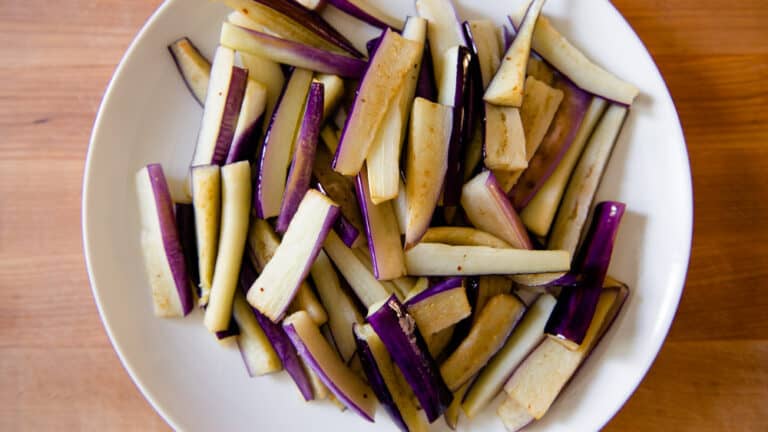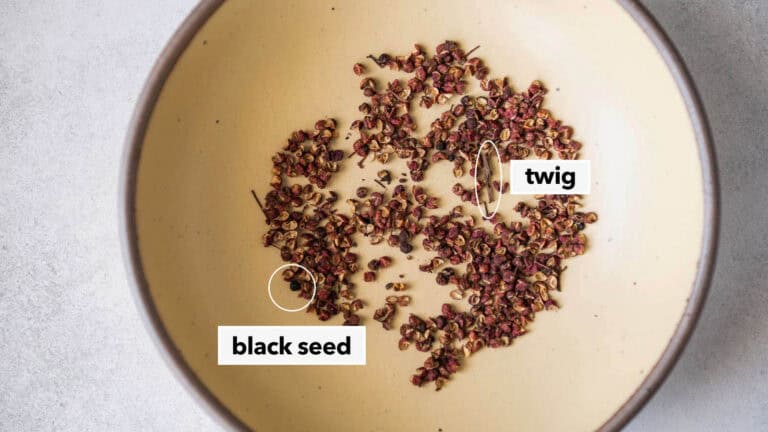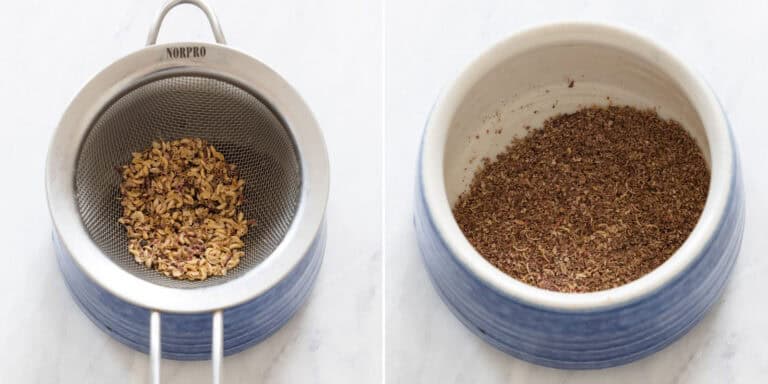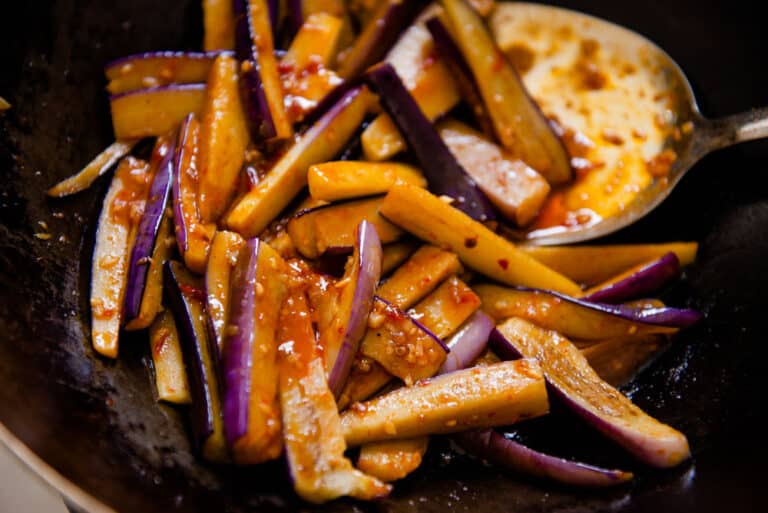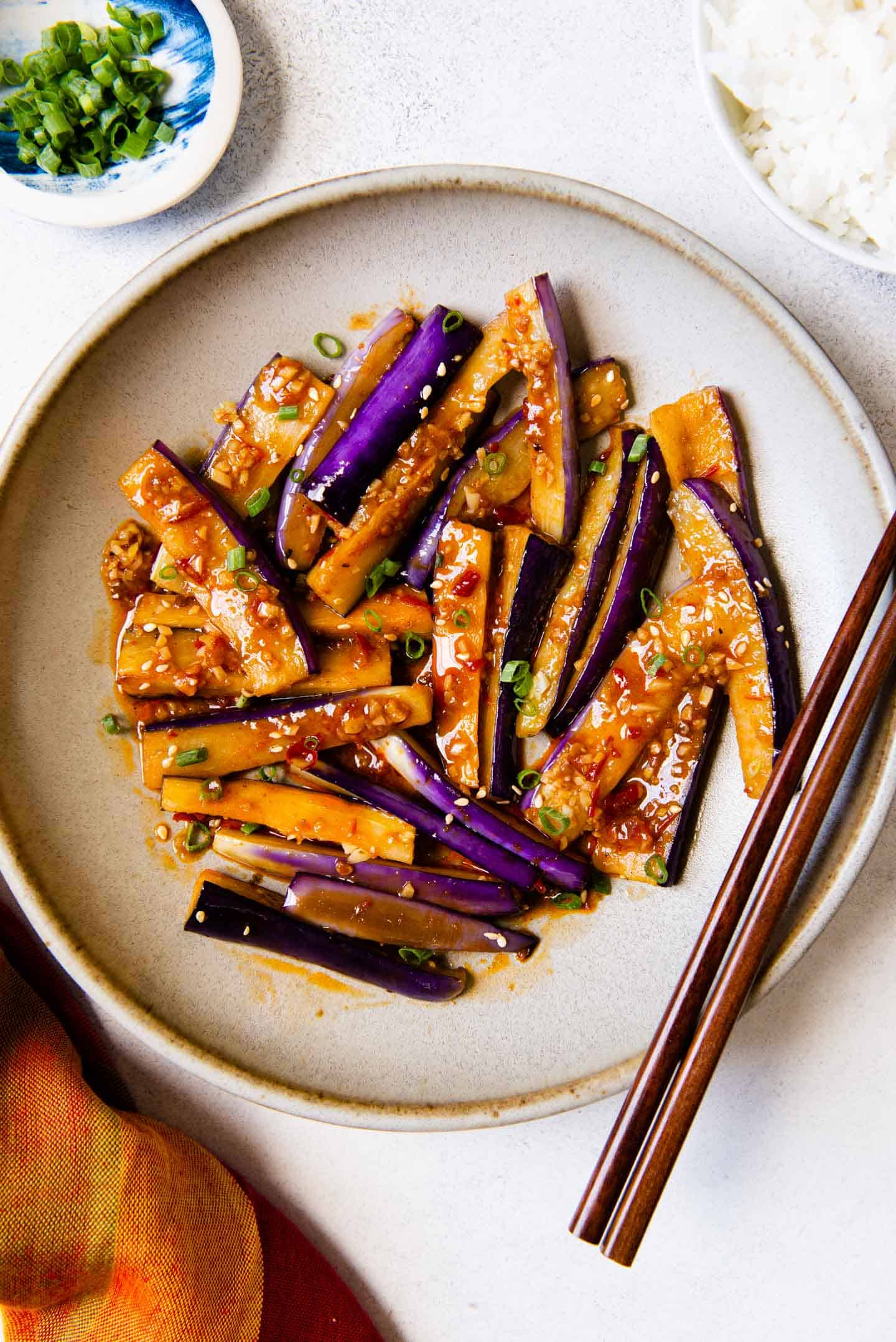I wanted to make a spicy eggplant dish that was simpler than 鱼香茄子 but didn’t compromise on flavor. I omitted the pork and vinegar and reduced the amount of sugar that’s typical in fish-fragrant eggplant recipes. Even with these modifications, the dish gets plenty of flavor from doubanjiang, garlic, ginger, and gochugaru. I can eat this spicy eggplant with just a plain bowl of jasmine rice for dinner any day. It is an absolute delight!
COOKING NOTES FOR SPICY STIR-FRIED EGGPLANT
USING CHINESE OR JAPANESE EGGPLANT
For this dish, you’ll want to use 2 to 3 long Chinese or Japanese eggplant (about 1 pound). The eggplant in the photo above are Chinese eggplant, as they have a lighter purple skin. Japanese eggplant are similar in shape but have a darker purple color. Sometimes, these varieties of eggplant are labeled as “Asian eggplant” in grocery stores. I prefer cooking with them because the seeds aren’t too tough and they generally don’t taste bitter.
NO NEED TO SALT EGGPLANT
If you’re using Chinese or Japanese eggplant, you do not need to salt the eggplant before cooking with them. Many recipes that use larger globe recommend salting them for several reasons. Salting the eggplant can draw out moisture and mask the bitterness of those varieties of eggplant. As mentioned above, Chinese or Japanese eggplant aren’t usually bitter, so I do not bother salting them. Furthermore, Chinese eggplant has a subtle sweet flavor, which gets lost if you generously salt the eggplant beforehand.
SHALLOW FRYING EGGPLANT
In this recipe, I shallow fry the eggplant pieces in 3/4 cup of neutral-flavored oil for about a minute. Shallow frying the eggplant for a short period cooks the eggplant without turning it mushy. It’s also the best method for preserving the vibrant purple color of the eggplant skin, making the finished dish more visually appealing. After frying the eggplant, you’ll use some of the remaining oil to prepare the sauce. Refrigerate any additional oil that’s leftover and use it for general cooking; it’ll keep for up to 2 weeks.
ALTERNATIVE METHODS FOR COOKING EGGPLANT
Pan Frying: For those of you who don’t like frying foods in a lot of oil, you can pan fry the eggplant over medium-high heat, until golden. As you can see in the photo above (left), pan frying will brown the eggplant skin. Another thing to note is that eggplant absorbs oil like a sponge. Even if you are pan-frying eggplant, don’t be frugal with the oil. Otherwise, the eggplant might come out dry. In the past, I have pan-fried eggplant with water to avoid using excessive oil. I would pan fry the eggplant with a little oil first. Once the eggplant absorbed all the oil, I added water to finish cooking the eggplant. The problem was that the water made the eggplant grayish and a little mushy for my taste (see photo above, right). That’s why I don’t usually cook eggplant that way anymore. Air Frying: When I’m not in the mood to fry eggplant, I like to cook them in an air fryer because the cooking process is very hands off. Preheat the air fryer to 350ºF (175ºC). Toss the eggplant with 2 to 3 tablespoons of oil (any vegetable or olive oil works). Working in two batches, cook the eggplant for 5 to 6 minutes, until the eggplant pieces are golden. The disadvantage of this cooking method is that the eggplant skins turn quite brown during the cooking process (see photo above, right). Don’t worry, the browning doesn’t affect the flavor of the eggplant. Steaming: Some people, like my sister, prefer to steam eggplant. Steam the eggplant pieces for about 5 to 6 minutes, until soft (see photo above, left). The benefit of steaming is that you don’t have to use additional oil to cook the eggplant. Also, the skins retain a nice purple color. However, the texture of the eggplant is incredibly soft and mushy, which I don’t like for this particular dish. Be very careful when you toss the steamed eggplant in the sauce.
SPECIAL INGREDIENTS FOR SAUCE
To prepare the peppercorns, I generally grind them with a pestle and mortar. The tough husks won’t break down completely, so sift the ground peppercorn through a mesh strainer. If you grind the peppercorns in a spice grinder, the husks should break down more. Chili Flakes: For additional bright flavor, I also add chili flakes to the sauce. I’ve cooked this spicy eggplant dish using either gochugaru (Korean pepper flakes) or the Guntur Sannam Chilli from Diaspora Co. Both of these chili flakes have a bright, almost fruity flavor and a relatively low spice level. You can also use Aleppo pepper, though they tend to be a bit spicier.
WHAT TO SERVE WITH SPICY EGGPLANT STIR FRY
Jasmine Rice Egg Fried Rice Smashed Cucumber Salad Teriyaki Tofu Honey Chili Garlic Shrimp Stir-Fried Shredded Potatoes
Note: This recipe was originally published in October 2020. I have updated the post and recipe to explain different cooking methods and using different ingredients.
